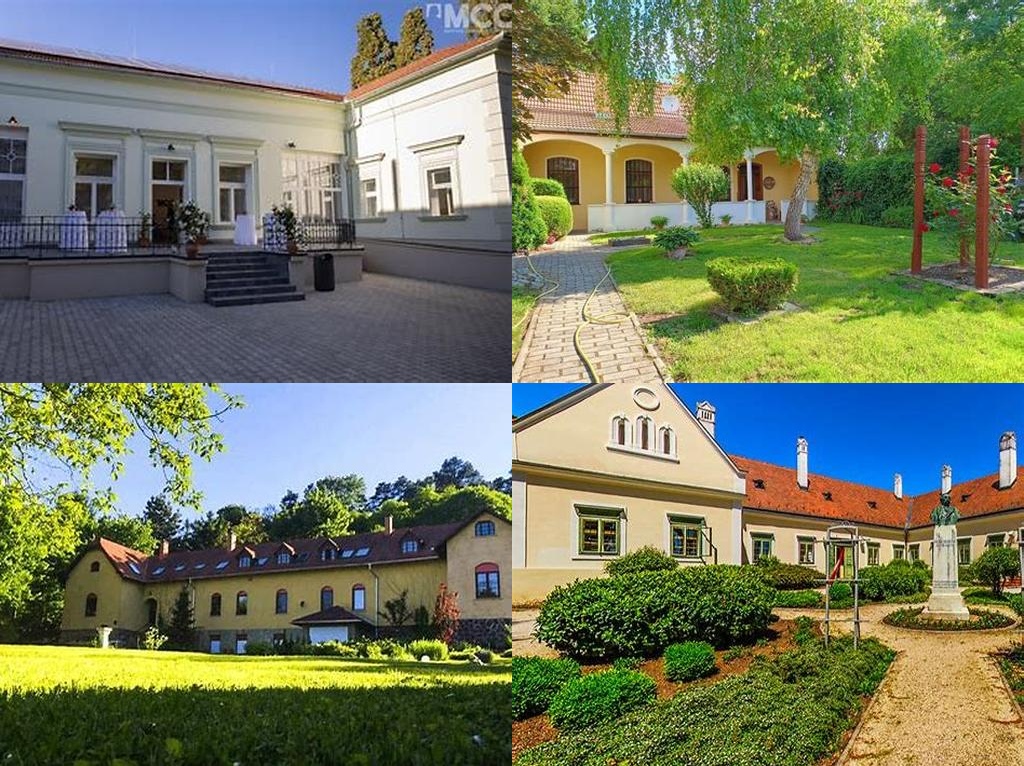
Aszalay-kúria sits quietly in the heart of Perkupa, a northern Hungarian village that feels suspended somewhere between old legends and everyday life. The mansion wears its history lightly; at first glance, it appears modest, almost blending into the local architecture with its whitewashed walls and simple lines. Yet, this unassuming façade hides layers of stories that stretch back to the early 19th century, intertwining with the fate of the noble Aszalay family, the town itself, and the greater region of Borsod-Abaúj-Zemplén. If you’re craving a travel experience that offers authenticity over grandeur, and depth over gloss, Aszalay-kúria is your place.
The mansion’s origins can be traced to the 1820s, when it was commissioned by the Aszalay family — a name that would become synonymous with Perkupa’s social, economic, and cultural expansion. Back then, the surrounding lands were a patchwork of forest and farmland, overseen by aristocrats with one foot in emerging modernity and the other firmly planted in local tradition. The mansion was more than just a family home; it was an anchor for community gatherings, agricultural planning, and at times, a stage for local politics. You can almost sense these echoing footsteps in the creak of the floorboards and the hush of the high-ceilinged rooms.
While the Aszalay Mansion isn’t the grandest manor you’ll ever see, its understated elegance speaks volumes. Broad wooden doors open onto cool corridors. The windows, still framed with the original woodwork, catch sunlight just right, throwing patterns across walls that have witnessed both festive and solemn moments. Unlike some heavily restored sites, Aszalay-kúria balances carefully maintained heritage with a worn-in comfort — there are scuffs in the hardwood, subtle valleys in the plaster, and the kind of patina that only comes from centuries of gentle living. It is these subtle traces of life that make every visit feel personal.
Those with an eye for detail will revel in the mansion’s classic Central European architectural features. The symmetrical layout, simple stucco decorations, and especially the arched entrance are a quiet nod to the rural Baroque influences of the period. The house was constructed with an emphasis on practicality rather than opulence: thick stone walls to hold off winter’s cold, a broad veranda to catch the cooling breezes in July. For anyone curious about Hungarian rural nobility, the Aszalay Mansion offers a refreshingly unvarnished return to the days when family and farm were at the heart of everything.
Wandering through the surrounding park, you’ll be greeted by centuries-old chestnut and linden trees, planted — local rumor has it — to commemorate family births and important village milestones. Though some of the ornamental gardens have given way to wildflowers and native grass, there’s a slow beauty in this mellowing landscape. Birdsong mingles with memories here, and it’s not hard to imagine an afternoon garden party or a long-ago wedding procession echoing through the tall grasses.
The story of Aszalay-kúria didn’t end with the decline of the noble families. When sweeping social changes began redefining Hungary in the 20th century — the world wars, the socialist decades, and the move towards democracy — the mansion shifted purpose. At various times, it housed local government offices, a village school, and even served as collective housing. Every adaptation left traces, turning the building into a living relic of the community’s ability to adapt and persevere. This gentle layering of functions gives the mansion an approachable air, as if it belongs as much to the people of today as to the illustrious Aszalays.
Visitors are often surprised by how accessible and welcoming the Aszalay Mansion feels. Unlike grand palaces that rope off their treasures, here the charm lies in touching history. During summer months, local guides and volunteers sometimes arrange informal exhibitions about village life, the Aszalay family, and the shifting fortunes of noble estates in Hungary’s north. If you’re lucky — or if you plan ahead — you might even stumble into a folk concert or a communal cooking day on the grounds.
For those looking to experience Hungarian history off the main tourist trail, a few hours at Aszalay-kúria offers something precious: the slow pleasure of discovery. You might come for the architecture, but you’ll stay for the feeling — of stepping, however briefly, into centuries of local memory. There’s honesty in the scuffed doors and a sense of ongoing story in every corner. If you ask the caretakers, they’ll attest: life here isn’t about reenacting the past, but living in its company, and inviting strangers to become, for a time, part of this intricate, evolving tale.





